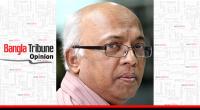Narendra Modi faces a jobs problem. Early results on Thursday suggest the prime minister’s Bharatiya Janata party has won a second term. Filled with nationalist sentiment following air strikes against Pakistan earlier this year, voters have looked past an employment crisis. The leader of this $3 trillion economy can’t afford to do the same.
Getting a grip on the scale of India’s unemployment troubles is difficult. The country often switches survey methods, making data hard to compare. Peculiar techniques create implausibly low figures.
Numbers leaked earlier this year from the National Sample Survey Office put the rate at 6.1% for the year to June 2018. New Delhi’s decision to withhold the report - and subsequent resignation of two of its authors in protest - suggests the situation is dire, even if not a 45-year high, as one newspaper asserted.
What’s more certain is that India needs at least 6 million new jobs each year. Some 12 million people reach the working age annually, but labour force participation is dismal at barely 50%, with a much lower rate for women. People are simultaneously ditching agriculture; the sector indirectly employs almost half the workforce, but is in severe distress due to pricing pressure and water scarcity. Secure, high-quality jobs are rare: last year, there were 25 million applications for 90,000 jobs with the state-run railways. Modi recognised the problem in 2014, with a promise to create 100 million jobs by 2022 through his “Make in India” push. There are more factories assembling mobile handsets, but manufacturing remains at barely 16% of GDP, well below the 25% target. With a population that will soon get older, plus the rise of automation, many believe the country has missed its opportunity. They see little hope of capitalising on factories forced out of the mainland by a worsening U.S.-China trade war. And still, thanks to poor training, qualified staffs are hard to find.
Modi recognised the problem in 2014, with a promise to create 100 million jobs by 2022 through his “Make in India” push. There are more factories assembling mobile handsets, but manufacturing remains at barely 16% of GDP, well below the 25% target. With a population that will soon get older, plus the rise of automation, many believe the country has missed its opportunity. They see little hope of capitalising on factories forced out of the mainland by a worsening U.S.-China trade war. And still, thanks to poor training, qualified staffs are hard to find.
India suffers from one of the highest levels of inequality in the world. In the past five years, desperate farmers have marched in protest into large cities; it’s easy to see how, without action on everything from skills to employment-creating industries like tourism, that could erupt into something much worse. As he takes office, Modi has one job: jobs.
Una Galani is Associate Editor of Reuters Breakingviews, based in Mumbai. She covers a cross-section of business, finance, and politics in South Asia.


